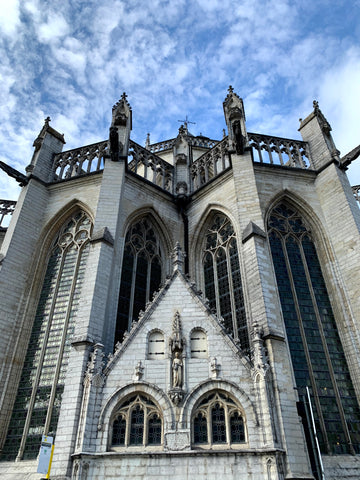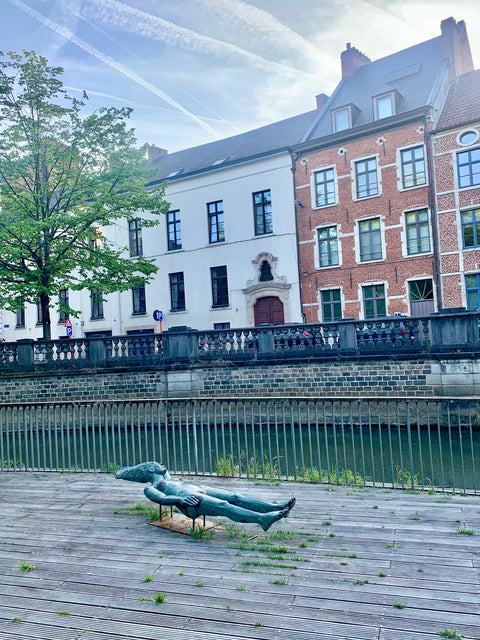A Modern Monument to a Medieval Legend
The Fiere Margriet statue in Leuven was designed by sculptor Willy Meysmans and unveiled in 1982. Measuring 2.5 meters long and weighing over 200 kilograms, the bronze statue depicts Margriet floating in the Dyle River, staying true to her legendary story.

The Legend of Fiere Margriet
Margaret of Leuven, known as Fiere Margriet (Blessed Margaret), lived in the early 13th century. Revered for her beauty, piety, and sense of honour, she became a beloved figure in Leuven. Employed at the Sint-Joris inn, her life took a tragic turn in 1225 when she was murdered by false pilgrims.
According to legend, her body was thrown into the Dyle, but it miraculously floated against the current, illuminated by a heavenly light, until it returned to Leuven. Witnesses, including Duke Hendrik I of Brabant, recognised the miracle, and Margriet was venerated as a patroness of martyrs, catering staff, and maids.
A Cult of Veneration
By 1433, Fiere Margriet was already deeply venerated, with reports of miracles at her burial site. Over time, her story became central to Leuven’s cultural and religious identity. A second version of her vita, written by rector Johannes Molanus (1533–1585), described her as a martyr who endured even greater suffering before her death.
A Controversial but Powerful Statue
The statue by Meysmans was commissioned to faithfully portray the story, showing Margriet’s body floating in the river. Initially, the depiction of a naked young woman sparked protest, but today it is considered one of Leuven’s most striking public artworks.
Margriet also appears as a statue on the Old Town Hall, placed near the figure of Vesalius, further linking her story to Leuven’s historical fabric.

(Source: Leuven Gebeiteld_metkaft - Leuven statues.pdf, 2014 ),
photo by Aslı Tezcan



